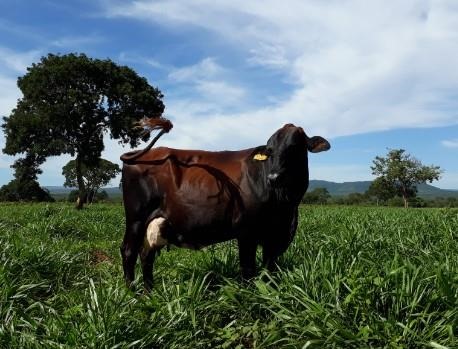By Arthur Vieira Ribeiro
A leaf-mining caterpillar called the hog-peanut leaf miner (Macrosaccus morrisella), was found for the first time infesting soybean fields in Minnesota in Saint Paul and Rosemount in 2021. Over the last couple weeks this year, we have found this insect again in Rosemount and also Morris, MN. This is a small insect, with the larvae reaching only 4.7 mm in length and the adults reaching about 6-7 mm in length. The hog-peanut leaf minder is a native species previously known to feed on two native plants called American hog peanut and slickseed fuzzybean. In soybean, injury from this insect can be easily detected on the lower surface of the leaves as white-colored blotch-type leaf mines.
In a recent paper in the Journal of Integrated Pest Management, we documented the hog-peanut leaf miner feeding on soybean in Minnesota and in Québec. This paper provides a more detailed description and pictures of the insect and the leaf mines. In Minnesota, feeding by this new leaf miner was less severe than in Québec, where infestations had more than 10 mines on individual leaflets.

The feeding injury (mines) from the hog-peanut leaf miner could be confused with mines from small beetles, such as the soybean leafminer. The mines from the hog-peanut leaf miner begin as an elongate winding track and evolve into irregular blotch-type mines occurring between the midribs or main lateral veins of leaves. These mines are often white on the underside of the leaves. On the upper surface of the leaves, the mines may be unnoticeable or be slightly raised and with numerous small light-colored spots. In contrast, mines caused by beetles, like the soybean leafminer, are brown-colored blister-like mines that expand crossing larger leaf veins.
The actual impact of the hog-peanut leaf miner to soybean production remains unknown. Further research is needed to assess the potential impacts to soybean yield, how widespread infestations in soybean occur, and the general biology of the insect in the crop. To perform such research, we will need to find fields with infestations. Please contact us (koch0125@umn.edu) if you suspect an infestation by the hog-peanut leaf miner in soybean this summer.
Source : umn.edu